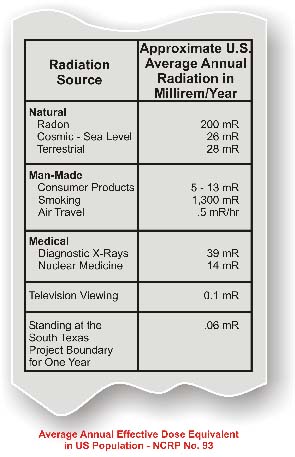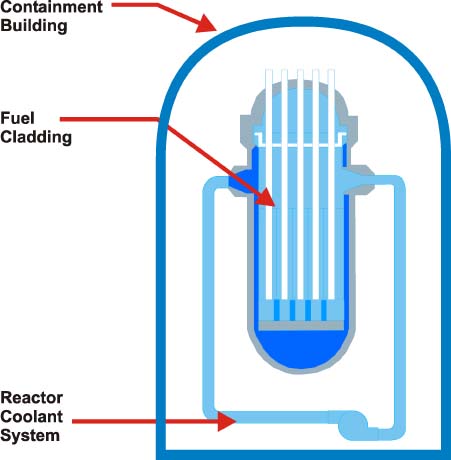Radiation: A Fact Of Life
Radiation is a form of energy like sunshine or light. It is all
around us and we receive very small amounts of radiation, known as background
radiation, each day. It is in the air we breathe, the food we eat, our homes,
and even in our bodies.
In addition to background radiation, there is artificial radiation
from such things as medical and dental X-rays and nuclear medicine
treatments.
Very small amounts of radiation come from the generation of
nuclear power.
Sources Of Background Radiation

How Radiation is Measured
Radiation is measured in units called millirems. The average
person receives about 360 millirems of background and artificial radiation per
year. The additional amount a person might receive from living near an operating
nuclear power plant is about one half millirem per year. Even though radiation
is invisible and cannot be smelled or tasted, it is easily detected and measured
with instruments.
Types of Radiation
The main types of ionizing (higher energy) radiation are: alpha
particles, beta particles, gamma rays and neutron particles. Alpha particles are
the least penetrating and can be stopped by a sheet of paper. Beta particles can
be stopped by a thin sheet of metal. Gamma rays and neutron particles are the
most penetrating. Gamma rays can be almost completely stopped by three feet of
concrete. Neutron particles can be stopped by water, concrete and
metal.
Benefits of Radiation
Radiation is used to benefit modern society in hundreds of ways by
improving the quality of life. These beneficial uses - in medicine, industry,
and agriculture - are possible because radiation can be precisely measured and
controlled.
STP Nuclear Power Plant Radiation Barriers
STP has three separate barriers that protect against radiation
releases. The fuel cladding, reactor coolant system, and the containment
building, illustrated below, safely isolate radioactive material.
In the unlikely event of an incident at STP, the plant safety
systems are designed to control and contain the release of radiation. The
emergency plans for Matagorda County and STP are designed to further minimize
the public’s exposure by using the protective actions of sheltering and/or
evacuation.

For additional information about radiation and nuclear power see
NRC and NEI websites www.nrc.gov and www.nei.org.